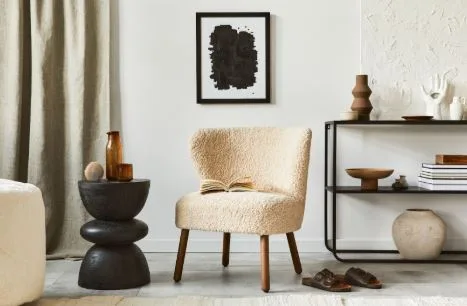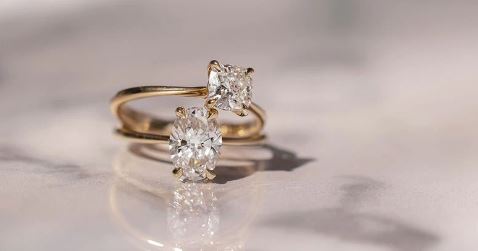Contemporary Furniture: Pros, Cons, and Examples
Walk into most modern homes today and you’ll probably spot it right away: clean lines, smooth surfaces, and furniture that looks like it was built for both style and function. That’s contemporary furniture. It’s everywhere now, from urban lofts to family homes in the suburbs. And if you’re looking for contemporary furniture Denver has no shortage of shops and showrooms filled with it.
But here’s the thing, just because it’s trendy doesn’t mean it’s for everyone. Some people love the minimal, airy vibe, others find it cold or uncomfortable. It depends on what you’re used to, and how you like to live.
What Is Contemporary Furniture, Exactly?
It’s easy to mix up “modern” and “contemporary.” Modern design refers to a specific historical period, mostly from the mid-1900s. Contemporary, though, changes with the times. It’s what’s current and what feels now.
Most contemporary pieces have a few things in common:
- Simple, clean shapes
- Materials like glass, metal, light wood
- Neutral colors, with a pop here or there
- Less fluff, more function
It doesn’t always mean futuristic or minimal, although sometimes it leans that way. The idea is more about keeping a space open, light, and practical. You won’t find a lot of ornate carvings or fussy details here.
The Upsides of Contemporary Style
A lot of folks are drawn to this style for good reasons. It’s not just about looks, it can change how a space feels, how you move through it, and even how relaxed you feel at home.
1. It Makes Rooms Feel Bigger
Because contemporary furniture tends to sit low and use open bases or slim legs, it doesn’t weigh a room down. A small living room can suddenly feel way more spacious, just from switching out a bulky couch for something sleek and streamlined.
2. It’s Flexible
One thing that’s nice about the neutral base of contemporary pieces is how easy they are to mix with other styles. You can throw in a vintage rug, maybe a rustic wood coffee table, and the look still works. It’s not boxed into one aesthetic.
3. It Puts Function First
This part appeals to practical types. Many pieces are designed to be useful—sectionals that reconfigure, beds with hidden drawers, shelves that mount easily without a ton of hardware. It’s meant to solve problems without shouting about it.
4. It Encourages Simplicity
Cluttered spaces stress people out. Contemporary rooms often feel calmer, partly because there’s less stuff, but also because the furniture isn’t trying so hard to grab your attention. That subtlety lets your personal touches stand out more.
5. It’s Easier to Move
Not always, but usually, contemporary furniture is lighter. No heavy claw-foot tables or 300-pound armoires. For renters or people who like rearranging a lot, this is a bonus.
The Downsides to Watch For
Still, this style’s not perfect. Some downsides crop up if you’re not careful about how you use it, or if you try to force it into a space that doesn’t match.
1. Can Feel Cold
This is the most common complaint. Without textures like plush fabrics or wood grain, a room can feel… sterile. The kind of place you admire, but don’t want to curl up in.
2. Not Always Cozy
Some contemporary sofas look incredible but don’t exactly invite naps. Thin cushions, sharp angles, or too-low profiles can be a turn-off if comfort’s your top priority.
3. Gets Dated Fast
Because contemporary follows the current trend, what’s hot today might look tired in five years. That sculptural lamp you love now? Could feel like a gimmick by the next decade.
4. Lack of Personality
Sometimes, when everything’s sleek and neutral, nothing stands out. It’s easy to fall into a kind of showroom effect: pretty, but a little soulless. Takes effort to make it feel like you live there.
5. Doesn’t Fit Every Home
Stick a super-modern chair in a Craftsman house and it might feel off. Some homes have so much built-in character that contemporary pieces feel disconnected. You can mix styles, sure, but it takes a careful hand.
Common Examples That Work Well
If you’re not sure what counts as “contemporary,” here’s a quick peek at the types of pieces that usually fall into this category, and why people like them.
Platform Beds
Low to the ground, no box spring needed. Usually has a simple headboard, maybe wood or fabric, no scrollwork or brass knobs. Often includes storage underneath, which makes it perfect for tight bedrooms.
Glass or Metal Tables
Dining tables or coffee tables with glass tops and steel legs show up a lot. They reflect light, feel airy, and clean up fast. No fuss, no bulk.
Modular Sofas
These can be rearranged easily, and often come in neutral grays or creams. Some include built-in recliners or storage spaces. The lines are straight, the backs are low, but the cushions vary by brand.
Open Shelving
Instead of chunky bookcases, you’ll see wall-mounted shelves or ladder-style units. They show off books and plants well, but be ready to keep them tidy because they’re out in the open.
Sculptural Lighting
Contemporary design loves statement lights. Floor lamps with arcs, pendant lights in strange shapes, or matte black sconces. They become focal points without crowding the room.
How to Make It Work for You
You don’t need to go all-in to make contemporary pieces work in your space. Mixing a few modern touches with your existing furniture can make everything feel fresher.
- Start small: Swap out a lamp or coffee table before you tackle the big pieces.
- Warm it up: Use throws, textured pillows, or a thick rug to keep the room from feeling cold.
- Add color carefully: Keep most things neutral, then add bold art or accents sparingly.
- Mind the materials: Pair smooth surfaces with something rougher, like a woven basket or a wood tray.
- Watch proportions: Low-slung furniture can make tall people feel awkward if everything’s too low.
Final Thoughts
Contemporary furniture has a strong pull for a reason. It’s modern without being futuristic, clean without being boring. For people who love open spaces, simple color schemes, and multipurpose pieces, it fits like a glove.
Still, it’s not one-size-fits-all. If you grew up in homes full of warm wood and antique pieces, this might feel too stark at first. But with the right mix of materials, and a few personal touches, it can be both beautiful and lived-in.
And honestly, that’s the sweet spot. Style that works for real life, not just for Instagram.





